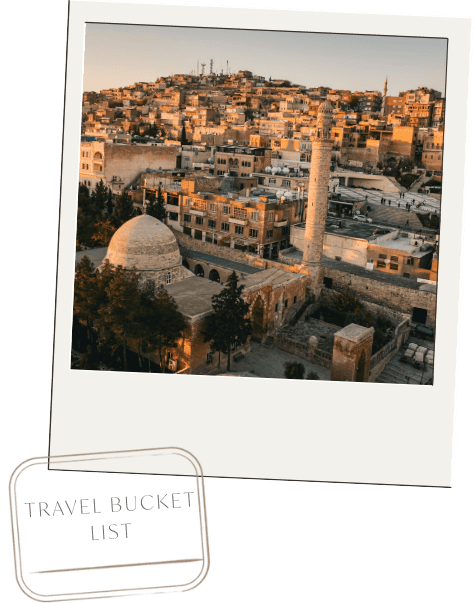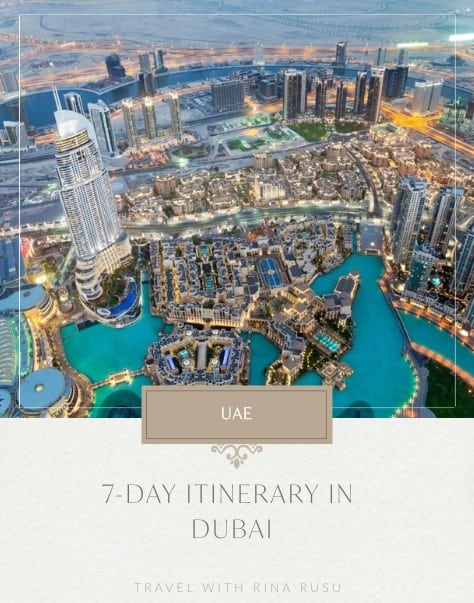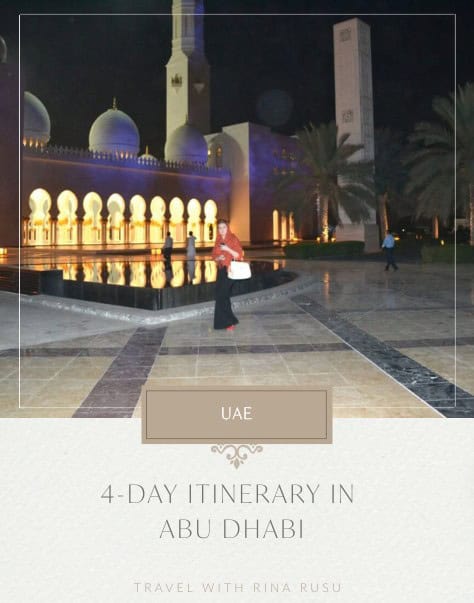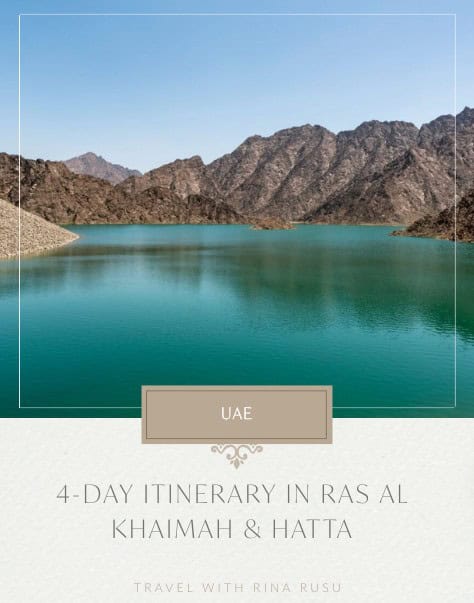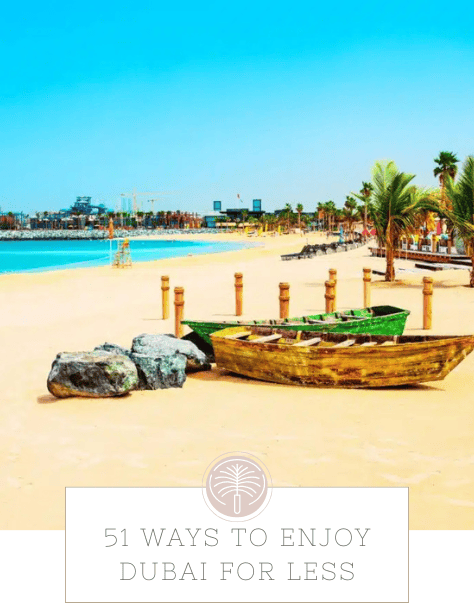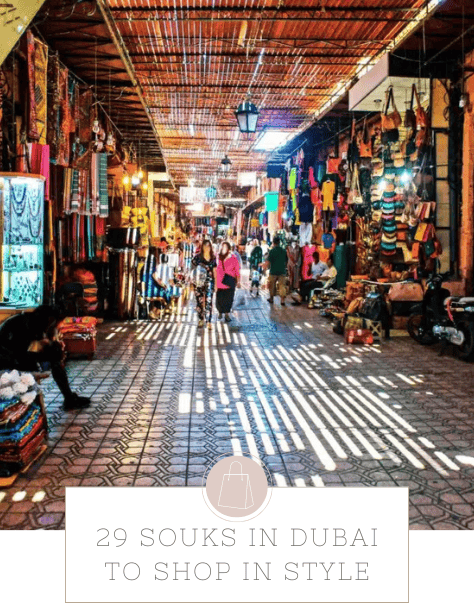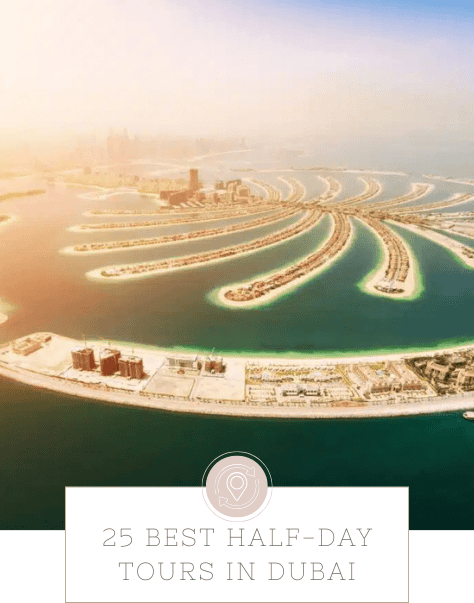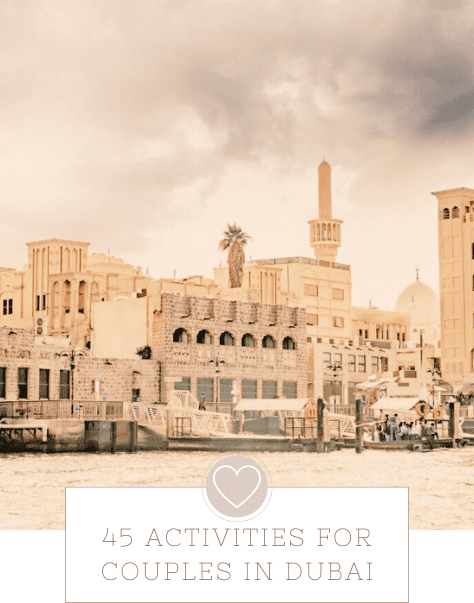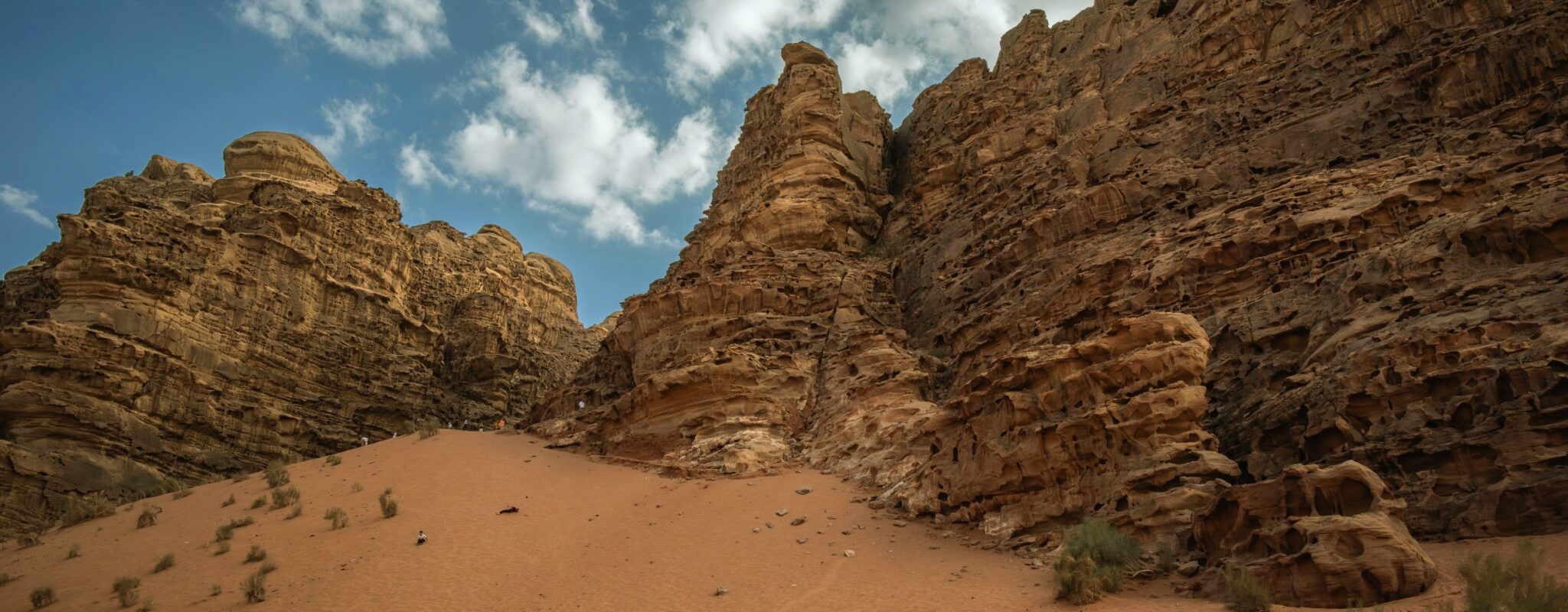

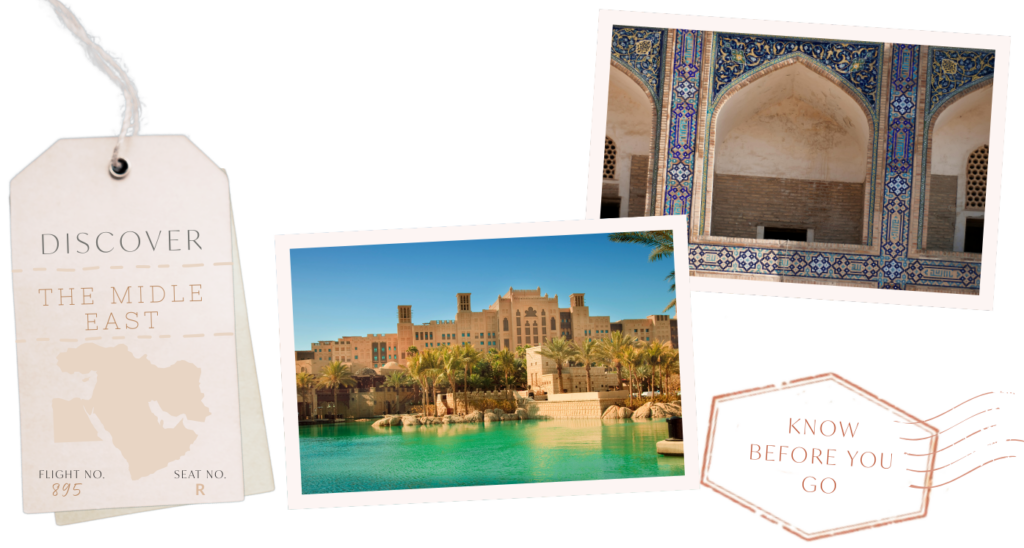
A region where ancient heritage meets futuristic innovation, the Middle East—especially the United Arab Emirates—offers an experience unlike any other. From the shimmering skyline of Dubai to the serene desert dunes of Ras Al Khaimah, this is a land of contrasts, color, and cultural richness.
Whether you’re admiring the grandeur of the Sheikh Zayed Mosque in Abu Dhabi, escaping to the tranquil beaches of Fujairah, or wandering through bustling souks and ultra-modern malls in Dubai, each emirate unveils its own rhythm of life and wonder.
Before setting off, take a moment to explore local customs, dress respectfully, and prepare for a climate that can shift from coastal breezes to desert heat. The UAE invites you to dive into a journey filled with flavors, traditions, and unforgettable memories that will leave you inspired long after you leave.


When planning your trip to the Middle East, it’s important to consider the region’s climate, which ranges from coastal breezes to desert heat. The most popular time to visit is between October and April, when temperatures are milder and more pleasant—perfect for sightseeing, outdoor adventures, and cultural experiences in cities like Dubai, Abu Dhabi, and beyond.
Peak tourist season typically falls between December and February, with cooler days ideal for desert safaris, beach outings, and exploring souks. However, this is also when crowds are largest and accommodation prices are at their highest.
If you don’t mind warmer temperatures, the summer months (June to August) can offer more budget-friendly travel, especially in indoor-friendly cities like Dubai and Abu Dhabi. Just be sure to plan early morning or evening activities and stay hydrated throughout the day.
For beach escapes in places like Fujairah or Ras Al Khaimah, the cooler months are perfect for enjoying the water without the intensity of the summer sun. As always, check local holidays and event calendars, as Ramadan and festivals may influence opening hours and the pace of daily life.
What to Expect
Diverse landscapes and climates – From the rolling dunes of the desert to turquoise coastlines and rugged mountains, the Middle East offers dramatic natural contrasts. Expect warm weather most of the year, with cooler temperatures from October to April—perfect for outdoor adventures.
Warm hospitality and cultural richness – Hospitality is a cornerstone of Middle Eastern life. Visitors are often welcomed with generosity, but it’s important to respect local traditions, such as modest dress codes and etiquette during religious holidays like Ramadan.
Modern cities and traditional charm – While cities like Dubai and Abu Dhabi are known for luxury and innovation, you’ll also find serene villages, historic forts, and cultural sites in places like Fujairah and Ras Al Khaimah. Expect a blend of cutting-edge infrastructure and old-world charm.
Health and safety – The region is generally very safe for travelers. Still, it’s wise to stay hydrated in hot months, use sun protection, and check for travel insurance or any medical guidelines before your trip.
Transportation options – Public transportation in major cities is modern and efficient, with metros, trams, and taxis readily available. For day trips, car rentals or guided tours are popular and convenient options.
Local currency and payments – Credit cards are widely accepted in urban areas and malls, but it’s always helpful to carry some local currency (Dirhams in the UAE) for markets and smaller vendors.
Food and water safety – The Middle East is known for flavorful dishes—from mezze to grilled meats and fresh juices. Tap water in the UAE is generally safe, but bottled water is still recommended for most travelers.
Tipping culture – While not always mandatory, tipping is appreciated in restaurants, salons, and by hotel staff. A 10–15% tip is considered generous and welcomed.

